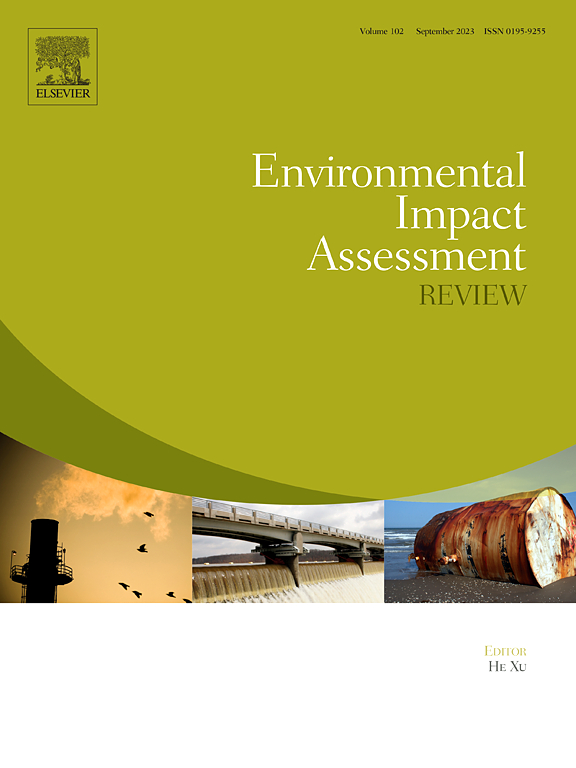Scale effects and driving mechanisms of flood in a multilevel sub-basin perspective - A case study of Haihe River Basin, China
IF 11.2
1区 社会学
Q1 ENVIRONMENTAL STUDIES
引用次数: 0
Abstract
Amidst the escalating dynamics of climate change, there has been a notable global uptick in the frequency and intensity of extreme meteorological phenomena. The resultant basin-wide flooding, triggered by extreme rainfall events, poses a formidable challenge to regional security and stability. In an effort to transcend the constraints inherent in previous studies that employed single-scale or raster-based approaches, the present research adopts a novel methodology by utilizing sub-watersheds as the fundamental units for delineation, thereby facilitating a multi-scale hierarchical analysis. This approach has been meticulously applied to the delineation of eight distinct sub-basins within the Haihe River Basin, with scales varying from 100 to 40,000 km2, serving as a robust case study. The analytical framework of this study is both comprehensive and multidisciplinary, incorporating advanced techniques such as spatial autocorrelation analysis, Spearman regression analysis, and random forest modeling. These methodologies are employed with the objective of unraveling the complex mechanisms influencing flood phenomena and elucidating the scale-dependent dynamics that drive flood patterns across various scales. Empirical results from this study reveal a distinct spatial distribution of flood occurrences within the Haihe River Basin, characterized by a higher frequency in the eastern regions and a lower frequency in the western areas. Notably, flood aggregation predominantly manifests in designated flood storage zones and along riverine corridors. This research also accentuates the significant scale effects in flood distribution, particularly highlighting that the impact of spatial indicators reaches its zenith at the 300 km2 sub-basin scale. Furthermore, the study delineates the differential impacts of topographic, hydrological, and land cover elements across varying basin scales. It is observed that these elements exert their most pronounced effects at large, medium, and small basin scales respectively. Intriguingly, the contribution rates of these indicators fluctuate across different sub-basin scales, with surface cover emerging as the most influential factor, followed by topographical features and hydrographic conditions. These insights offer invaluable guidance for the strategic prioritization and targeted management of flood mitigation efforts within river basins, thereby contributing significantly to the enhancement of regional resilience against hydrological disasters. This study not only advances our understanding of flood dynamics but also underscores the critical importance of scale-aware strategies in the effective management of water resources in the face of climate change.
多层次次流域视角下洪水的尺度效应与驱动机制——以海河流域为例
随着气候变化的不断加剧,全球极端气象现象的频率和强度显著上升。极端降雨事件引发的整个流域洪水对区域安全与稳定构成了巨大挑战。为了超越以往采用单尺度或基于栅格方法的研究固有的局限性,本研究采用了一种新颖的方法,将子流域作为描绘的基本单位,从而促进了多尺度层次分析。该方法已被精心应用于海河流域内8个不同的子流域的划定,规模从100到40000平方公里不等,作为一个强有力的案例研究。本研究的分析框架是综合的和多学科的,结合了空间自相关分析、Spearman回归分析和随机森林模型等先进技术。这些方法的目的是揭示影响洪水现象的复杂机制,并阐明驱动不同尺度洪水模式的尺度依赖动力学。实证研究结果表明,海河流域洪水发生具有明显的空间分布特征,呈现出东部高、西部低的特征。值得注意的是,洪水聚集主要表现在指定的蓄洪区和沿河走廊。该研究还强调了洪水分布的显著尺度效应,特别强调了空间指标的影响在300 km2子流域尺度上达到顶峰。此外,该研究还描述了地形、水文和土地覆盖要素在不同流域尺度上的差异影响。观察到,这些元素分别在大、中、小流域尺度上发挥最显著的作用。有趣的是,这些指标的贡献率在不同的子流域尺度上有所波动,地表覆盖是影响最大的因素,其次是地形特征和水文条件。这些见解为江河流域防洪减灾工作的战略优先排序和有针对性的管理提供了宝贵的指导,从而为增强区域抵御水文灾害的能力作出了重大贡献。这项研究不仅促进了我们对洪水动力学的理解,而且强调了在气候变化的情况下,尺度意识策略在有效管理水资源方面的重要性。
本文章由计算机程序翻译,如有差异,请以英文原文为准。
求助全文
约1分钟内获得全文
求助全文
来源期刊

Environmental Impact Assessment Review
ENVIRONMENTAL STUDIES-
CiteScore
12.60
自引率
10.10%
发文量
200
审稿时长
33 days
期刊介绍:
Environmental Impact Assessment Review is an interdisciplinary journal that serves a global audience of practitioners, policymakers, and academics involved in assessing the environmental impact of policies, projects, processes, and products. The journal focuses on innovative theory and practice in environmental impact assessment (EIA). Papers are expected to present innovative ideas, be topical, and coherent. The journal emphasizes concepts, methods, techniques, approaches, and systems related to EIA theory and practice.
 求助内容:
求助内容: 应助结果提醒方式:
应助结果提醒方式:


